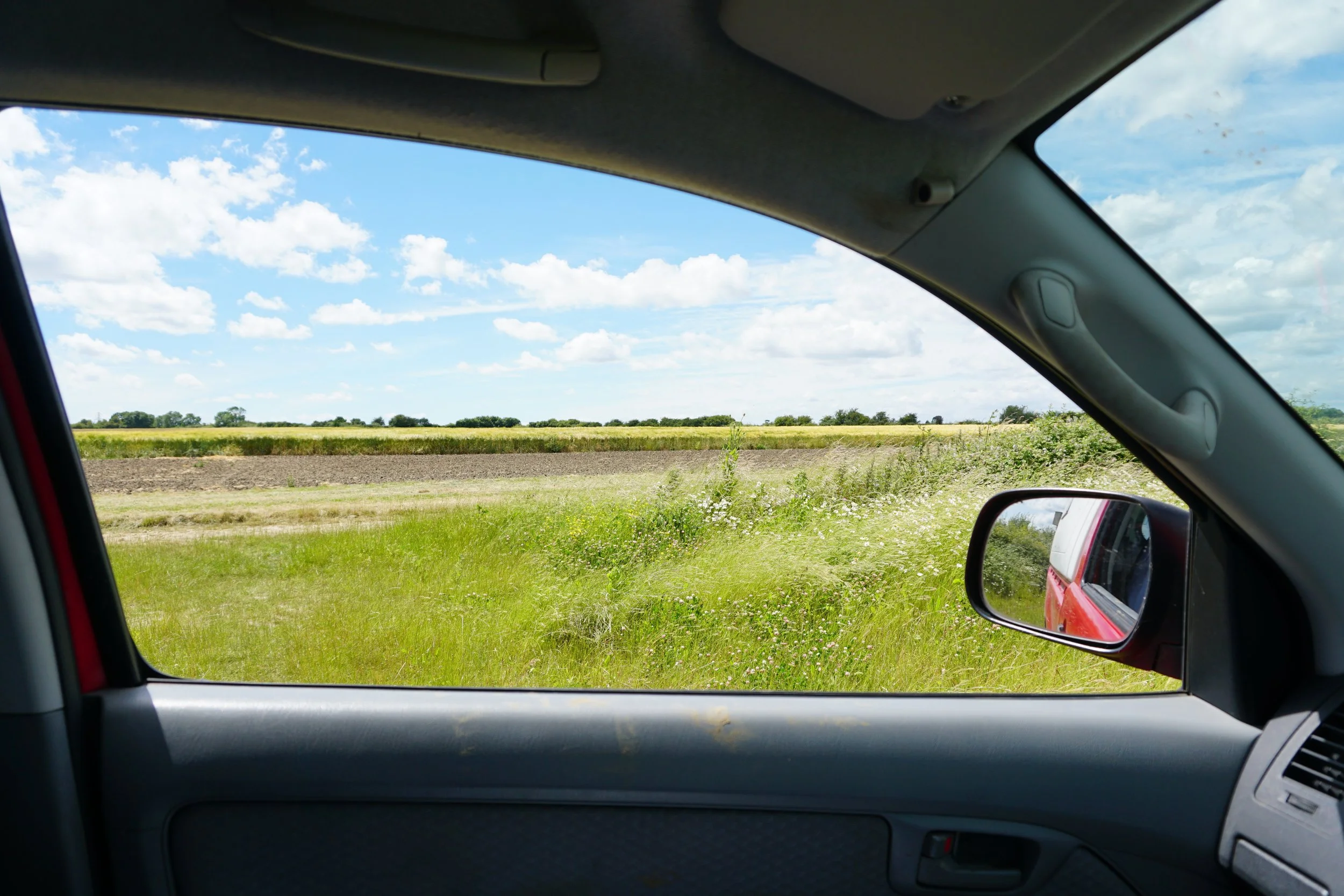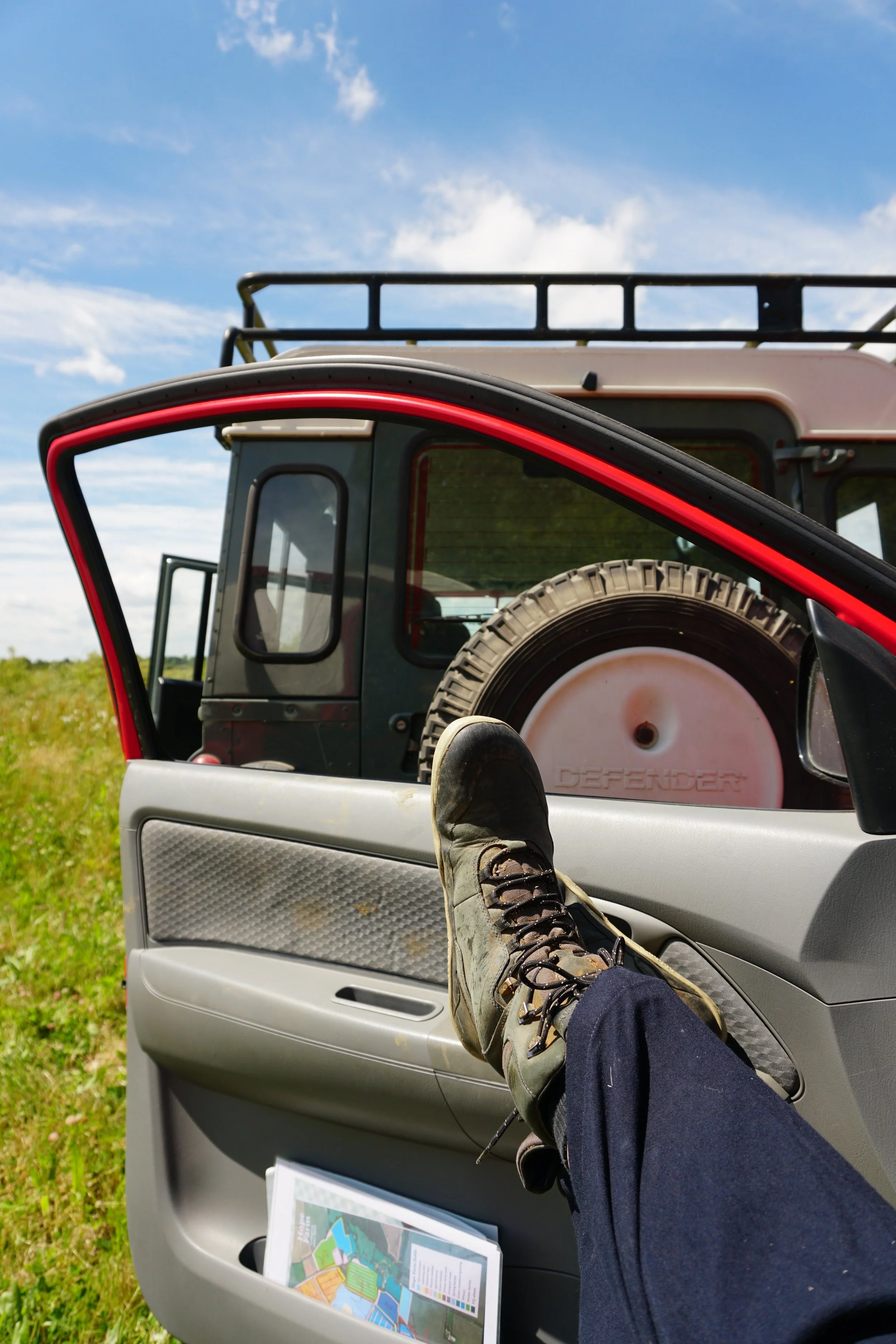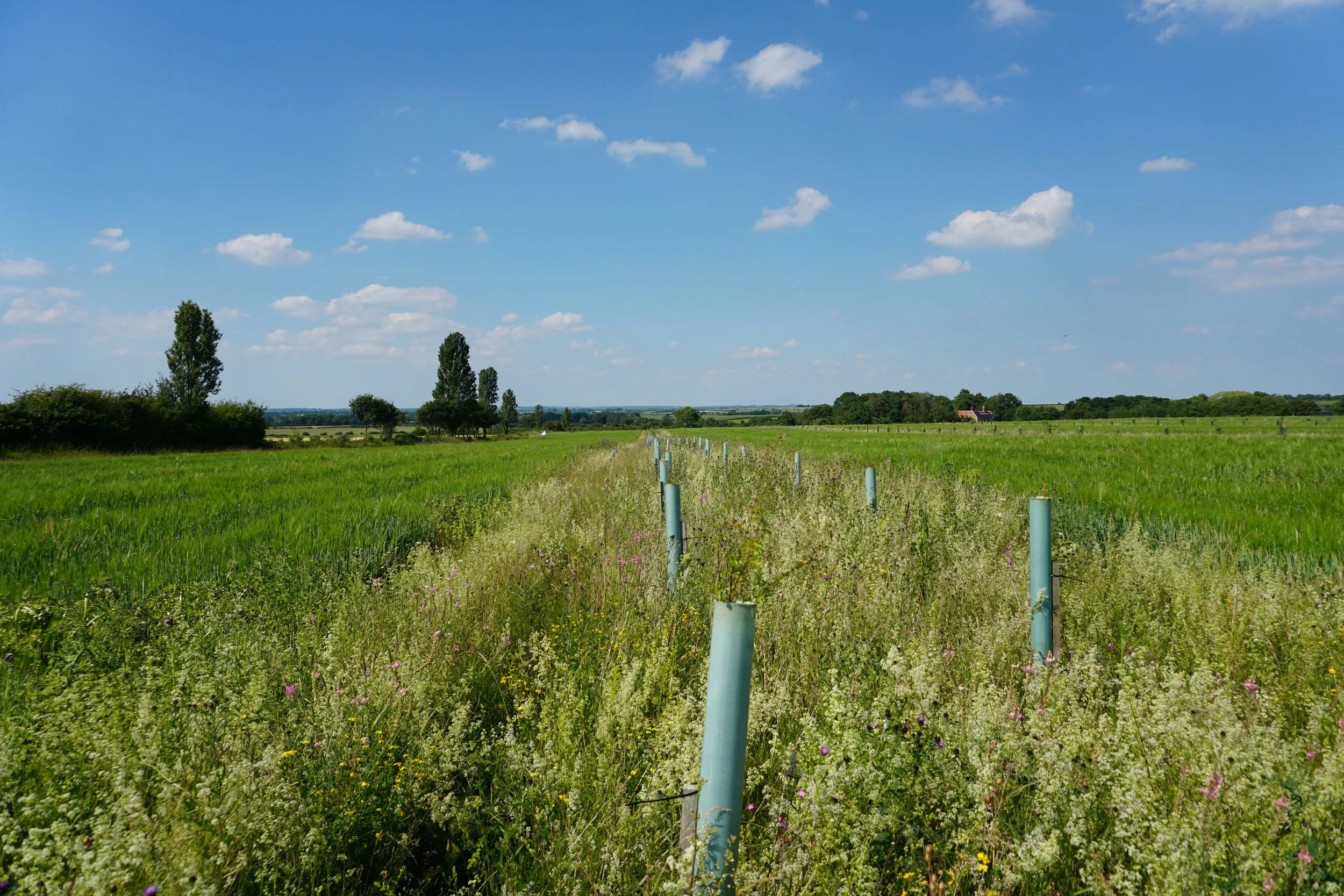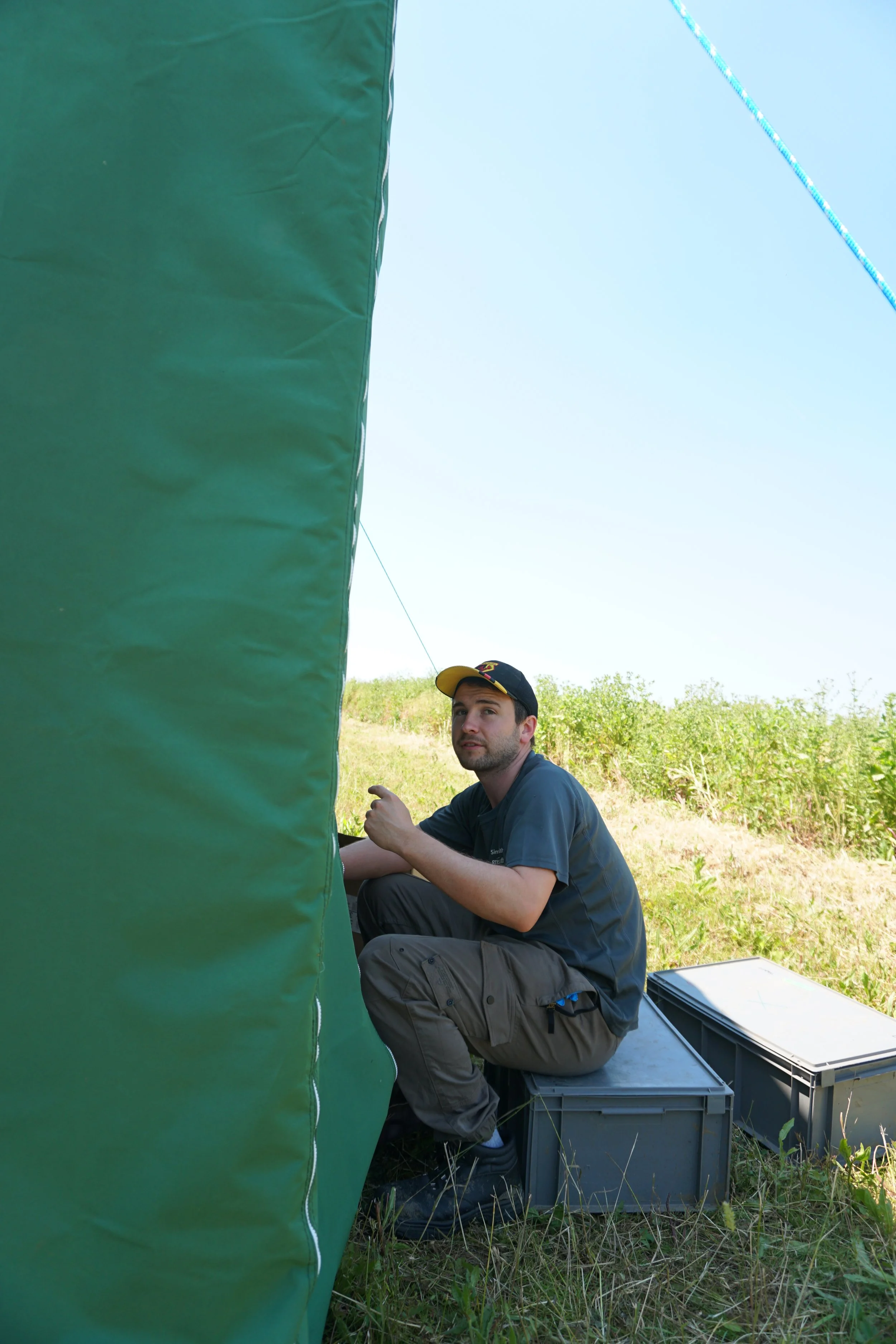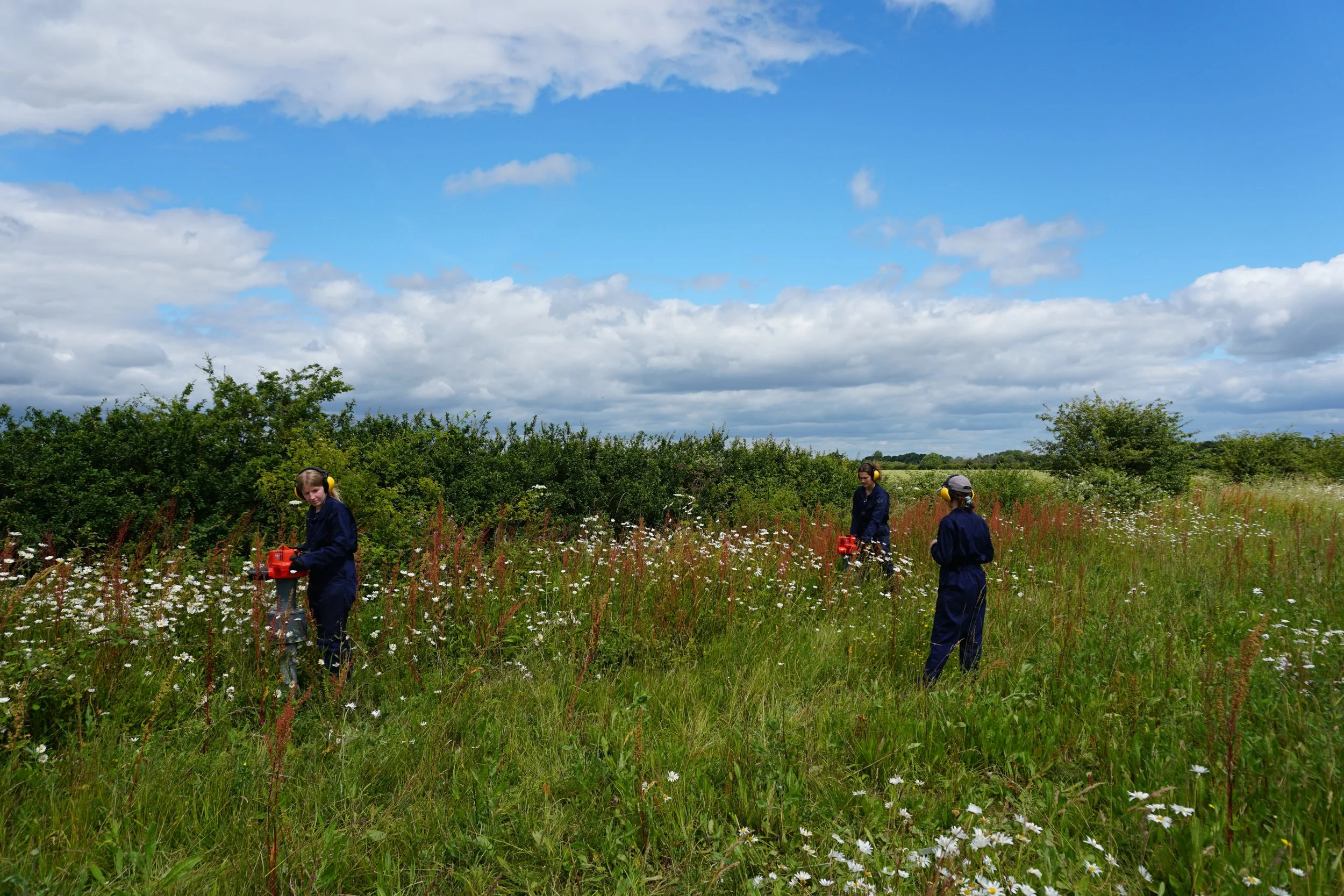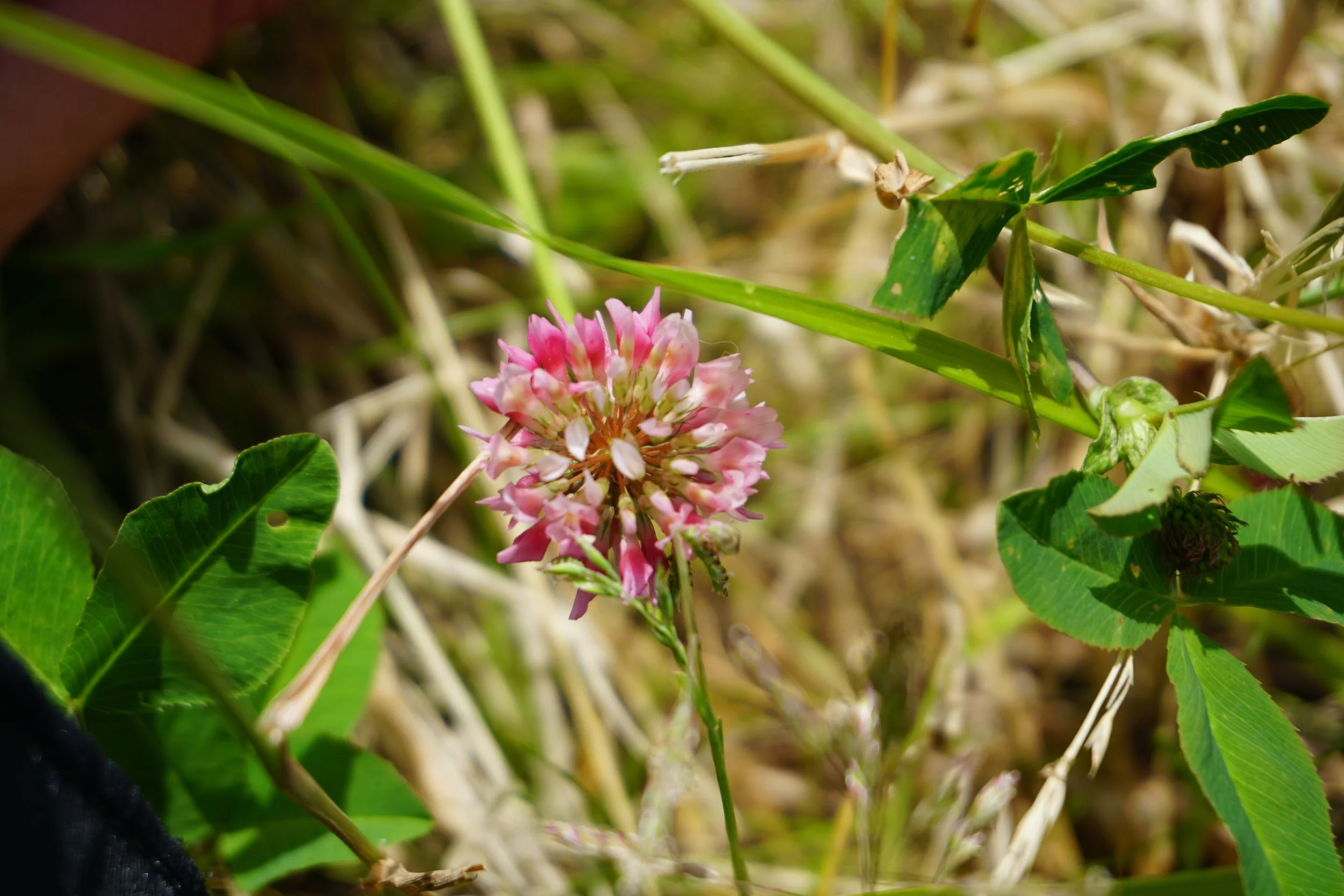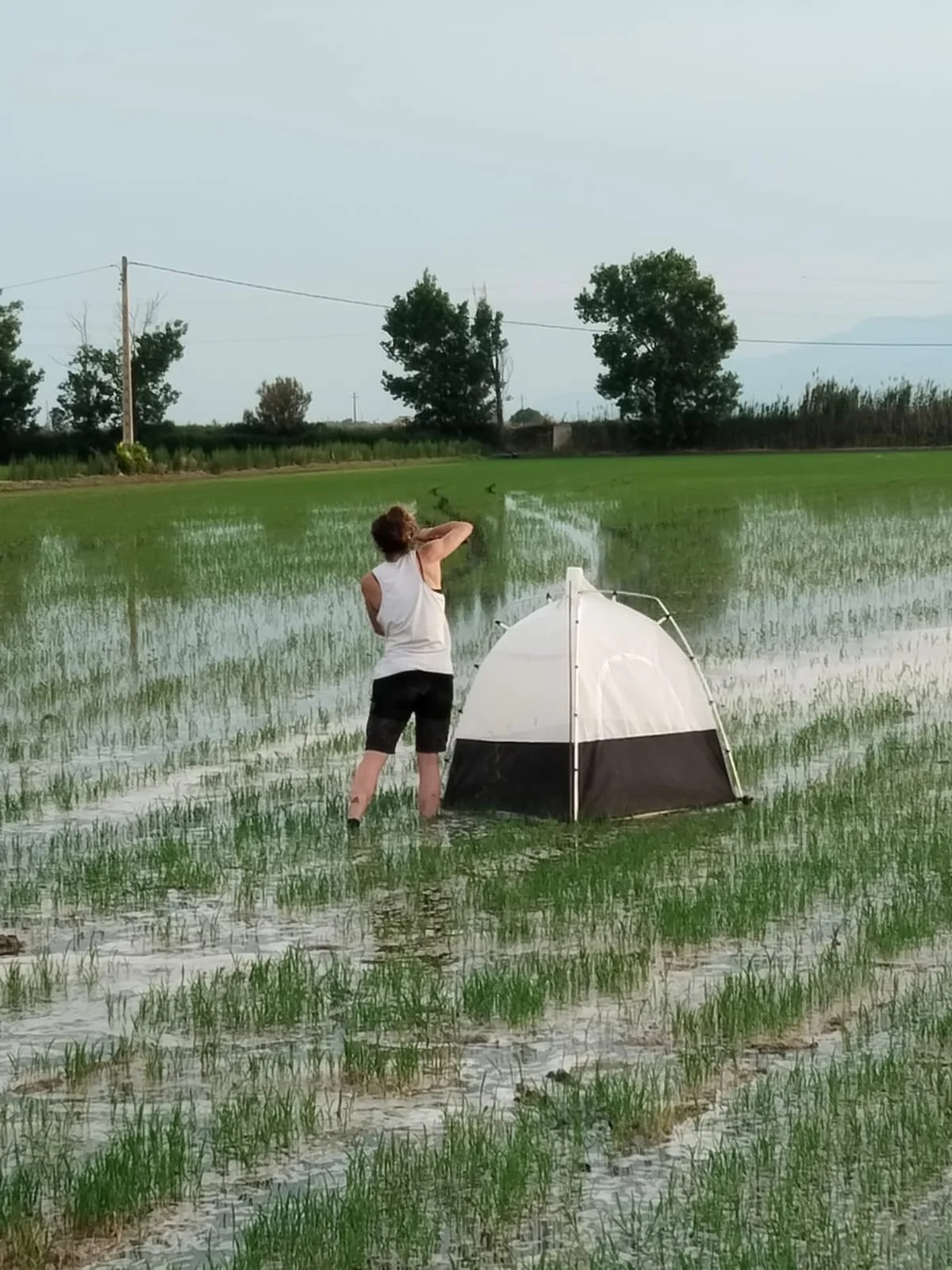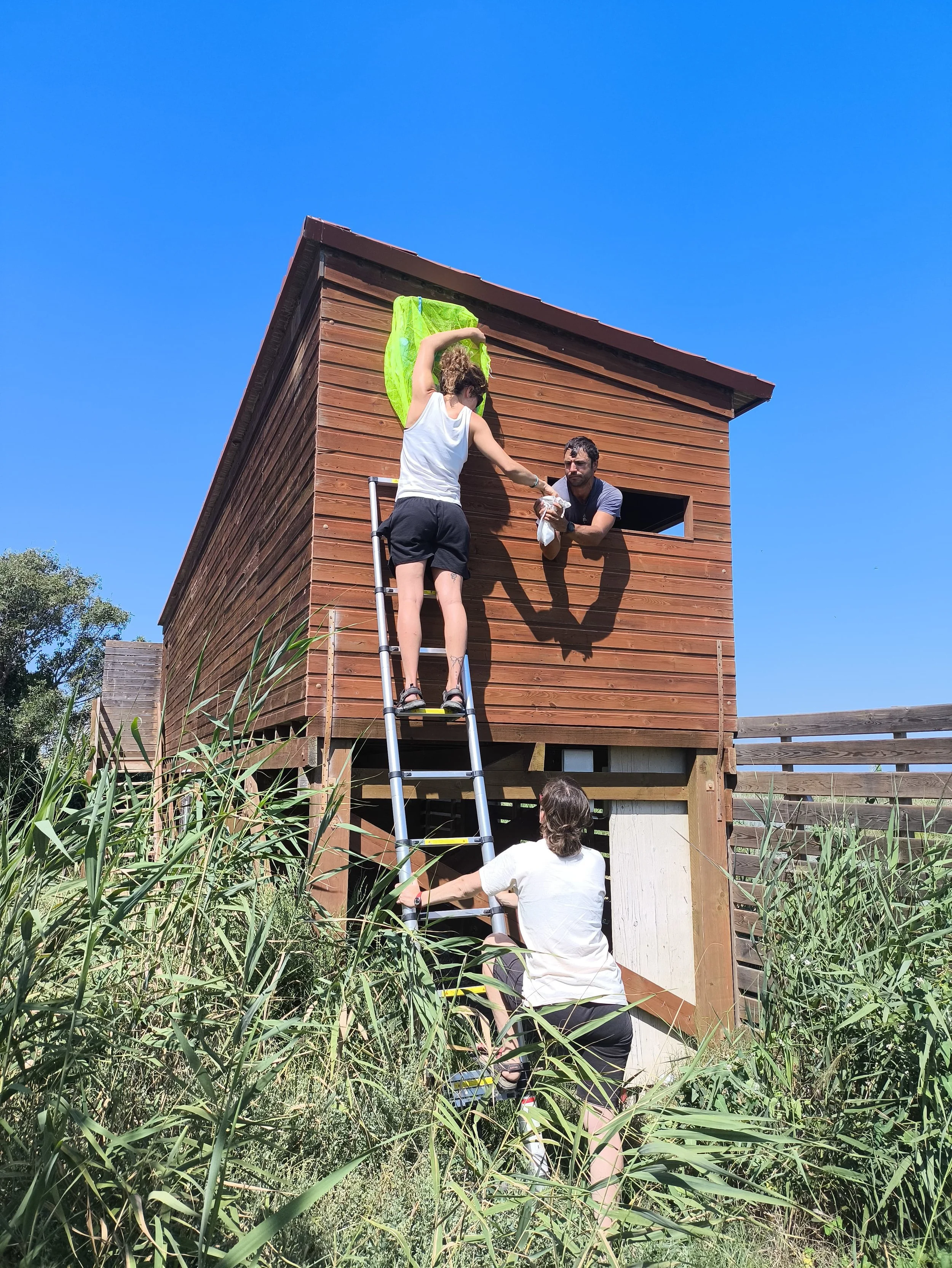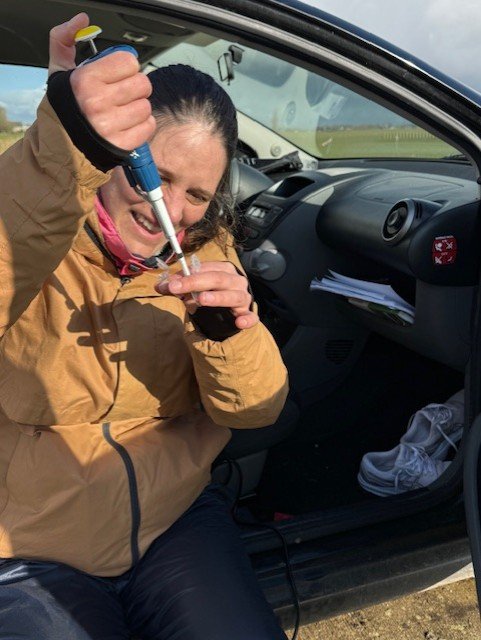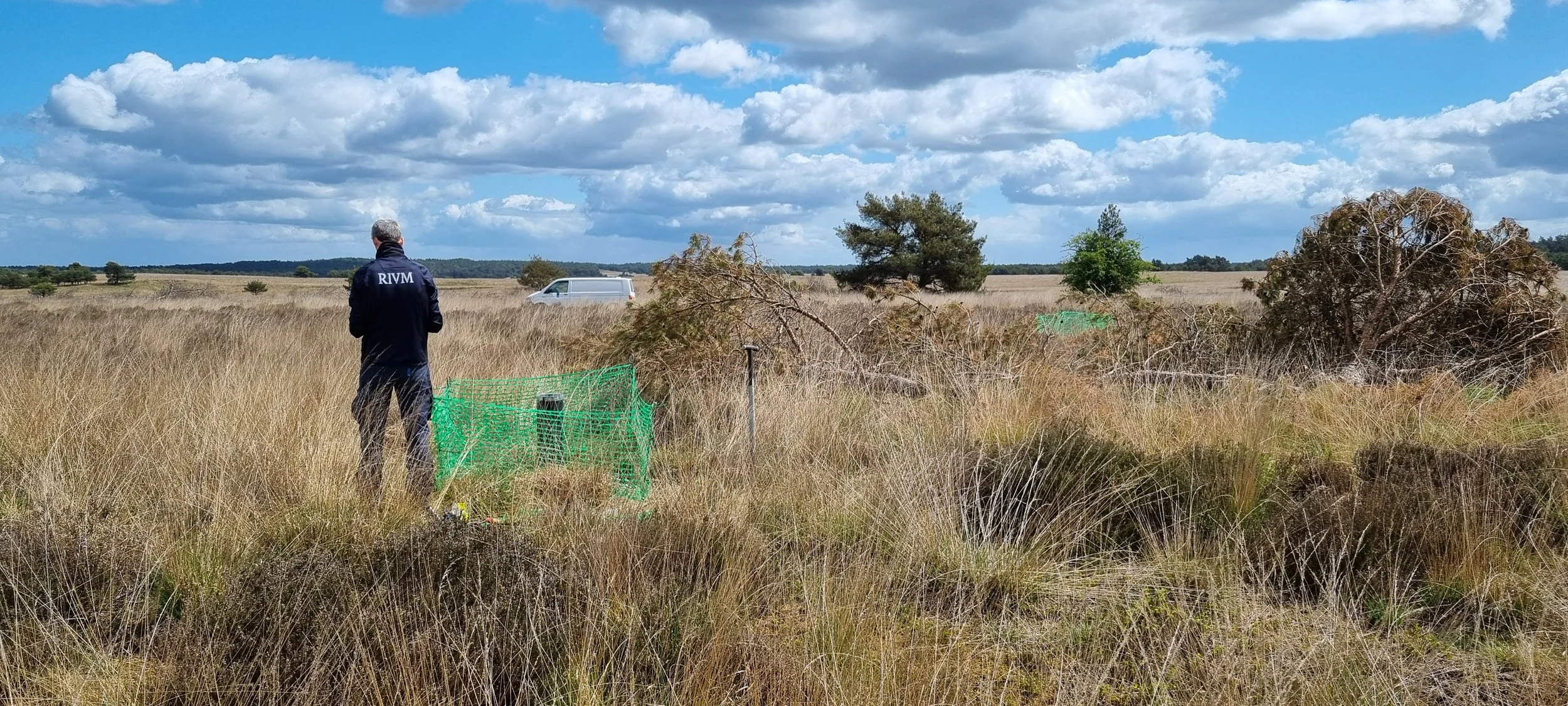SYBERAC’s 2025 Field Season
During the 2025 field season, our expert partners across Europe explored farms, wetlands, vineyards, and migratory routes to uncover how pollutants travel and interact. These findings help further SYBERAC’s goal of advancing scientific understanding of chemical impacts on terrestrial biodiversity.
Case Study Highlights
CS 1A – Hope Farm: Conservation vs. Conventional Farming
At Hope Farm, researchers from UKCEH compared conservation-focused farming with conventional practices. Unexpected legacy chemicals were detected in soils, prompting investigation into airborne transport or non-extractable residues. We used a metabarcoding system of Cardiff University, a robotic system developed for COVID-19, to analyse ground-active invertebrates. Additional work included developing a toxicological vulnerability metric and conducting microbial community experiments during fungicide spraying, supported by air sampling to assess long-range chemical inputs.
CS 1B – Triazoles and the Insect-Bird Network
In Spain, UCLM completed data collection for a holistic insect-bird network approach. Dose-response studies on triazoles in red-legged partridge and invertebrates (mealworm, silkworm) are nearing publication. Field activities included habitat characterization to be used in environmental risk assessment (ERA) and mapping 500 m buffers for 220 plant protection products (PPPs). Insect and bird richness and diversity data are now ready for ERA.
CS 2A – Rice Fields and Bat Monitoring
The fieldwork in the Ebro Delta by CSIC spanned 45 areas (conventional and organic rice fields, and natural areas). Sampling of water, sediment, and bat faeces was synchronized with pesticide applications, including aerial spraying. Laboratory analysis identified 24 authorized and 7 non-authorized compounds, plus 64 metabolites. These were analysed in different sources like mice, water, sediments and chironomids. In the field, acoustic monitoring and metabolomic biomarkers were used to assess bat exposure. Challenges included species and gender identification due to bat clustering: One bat box can contain up to 200 bats that sit together in a big ball, so they need to be caught with nets (green net below) and identified one by one. Future work will measure pesticide residues in bat fur and address the challenge of bats’ wide foraging radius.
CS 2B – Ponds and Amphibians
Eight ponds in central Spain were monitored to assess agrochemical runoff impacts on amphibians. Species include Pleurodeles waltl and Pelobates cultripes. The study aims to break ERA silos by linking aquatic and terrestrial exposure, as amphibians cross habitat boundaries. Challenges included getting alls stakeholders together at the same time and trap damage by livestock.
CS 3 – Migratory Bird Exposure
The WUR research team collected 52 samples from black-tailed godwits (Limosa limosa) along the East Atlantic Flyway. The researchers collected blood, feathers, and preen oil to analyse pollutant residues and biomarkers for oxidative stress. Groningen University provided migration route data, while WUR coordinated exposure modelling. Despite net-trapping difficulties, nest-based trapping allowed tagging for tracking. Soil sampling assessed exposure, and blood analysis is underway, which also be used in a model developed by UOS. A major challenge remains tracking the birds’ exposure across international borders.
CS 4A – Sludge Application and Uptake
Our Danish site is an experimental field site of the University of Copenhagen. The case study is run by our project partner AU, whose team treated a plot with accelerated sludge (three times the legal limit) and compared it to untreated plots. Sampling included sludge, soil, crops, and pore water—requiring complex trench installations. Additionally, a master student from UC examined the plot’s soil microbiome. The University of Copenhagen will grow crops on the plot that will be sampled for uptake of pollutants after harvesting. Generally, this case study’s research focuses on organic micropollutants and heavy metals under EU sludge regulations.
CS 4B – Pharmaceuticals in Avian Scavengers
Researchers from UCLM monitored Non-Steroidal Anti-Inflammatory Drugs (so-called NSAIDs, like diclofenac and ketoprofen), barbiturates, and antibiotics in livestock carcasses and vultures at vulture feeding stations in Spain. The birds can be poisoned by these compounds and they are still being found in livers, requiring constant monitoring as they are still present in Spanish livestock. Acute oral toxicity trials on griffon vultures are in final authorization stages, and the team has researched a non-invasive way of monitoring pharmaceuticals in pellets that are regurgitated by vultures.
CS 5A – Vineyards in Portugal
The University of Coimbra (UC) established 20 sampling sites in the Portuguese Bairrada wine region. Nineteen of these sites use Integrated Pest Management (IPM)—an approach that minimizes pesticide use by combining multiple control methods—and one is organic.
Monthly sampling was conducted, synchronized with pesticide applications based on information from local farmers. The research focuses on assessing the impact on small animals living in the soil (soil fauna) and non-target arthropods (beneficial insects and spiders that are not pests). Detailed Plant Protection Product (PPP) use data (i.e., specific pesticide application records) supports large-scale Environmental Risk Assessment (ERA) modelling. This means the team is using real-world usage data to create models that predict the environmental risks posed by these chemicals across the entire landscape.
CS 6 – Insect Decline and Atmospheric Deposition
The National Institute for Public Health and the Environment (RIVM) is leading research on pesticide deposition in a Dutch Natura 2000 protected nature site. This study is crucial because there has been a worrying insect decline observed in natural areas.
Sampling includes soil, plants, insects, and devices that capture chemicals falling from the air in rain (wet deposition) and dust (dry deposition). The area is a heathland where the overgrowth of purple moor grass is a habitat problem, a condition often caused by excess nitrogen pollution. Residues will be specifically analysed in rainwater and oak leaves, and Wageningen University & Research (WUR) will conduct the soil analysis. The primary focus will be on pesticides, but the team expects to also discover other chemical substances that have drifted into the area.
It may be interesting to see if the weather, specifically wind direction at the time of spraying, influences where the chemicals settle. A key policy finding was that there are regulatory gaps for chemicals that travel medium distances (e.g., 5-50 km) compared to existing international treaties for long-distance air pollution (long-range conventions).

